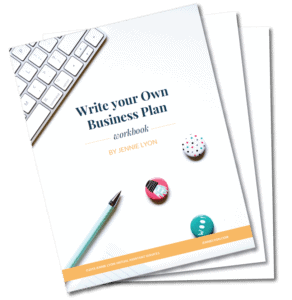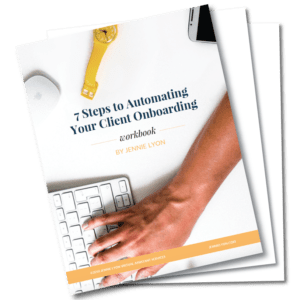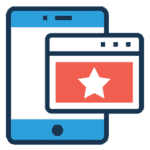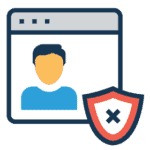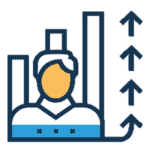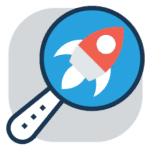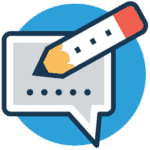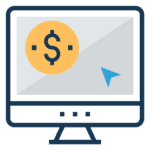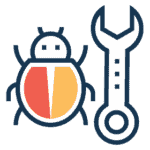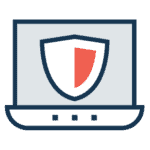How to Attract Your Ideal Audience with a Podcast (Workbook & Checklist)
About 30 years ago, do you know one of the best places to connect with your customers? Their car.
The very first thing they did after they got into their car in the morning was turn on the radio. And chances are that it remained on for their entire commute to work, both back and forth. This offered advertisers a captive audience (literally, if the driver was on the highway!)
But then around 15 years ago, things started to change. People stopped listening to the radio as much when they headed to work. Instead, they would put on music from their MP3 player. Not a whole lot of opportunities to advertise your business on an iPod (well, unless you’re Apple). Recently though, the tide has begun to turn back. People are again listening to audio, but instead of tuning into their local radio station, they’re listening to podcasts.
Podcasts are the new radio star! Podcast types range from interviews with celebrities to political talk to people talking about, well nothing in particular. Like radio, podcasting is absolutely free, but unlike radio, it gives you the freedom to listen to what you want, whenever you want. And it is only getting more and more popular.
So, does this mean you should start a podcast to connect with your clients and customers? Here’s what goes into creating a brand-new podcast!
Why Podcasts Are So Effective
The word “podcast” is a portmanteau of the words “broadcast” and “iPod.” Over the last decade, podcasts have become one of the most popular forms of spoken-audio entertainment.
One of the main reasons you may want to create a podcast is to position yourself as an expert online. If your audience knows that you are an expert, they will be more attracted to your online product offerings. If you can’t convert your audience to paying customers, then you certainly aren’t getting the maximum value out of your podcast.
One way to do this is to have a compelling call-to-action at the end of every podcast. You don’t need to wing this. In fact, you should probably have this section scripted to make sure you hit all of the salient points (more on this in a bit). You should aim your CTA at getting people to download an opt-in, purchasing one of your products, or suggesting the listener get on a free consultation with you.
Starting Your Own Podcast
Now, this is a topic that I’m very well acquainted with, as I’ve recently started a podcast of my own. It was a lot of hard work, but I can honestly say that it’s been worth it!
While many people start podcasts for fun, as a small business owner, you have a return-on-investment to keep an eye on. The reason you want to create a podcast is better to position yourself as an expert in your industry and build your audience and customer base.
Creating a podcast isn’t quite as easy as sitting down at your computer with a mic and talking about the first thing that floats into your head. If you want to create a successful podcast that actually helps grow your business, you need to do a lot of planning.
Necessary Equipment
As podcasting is an audio-based medium, you need the quality of your voice recording to be as high as possible. Now, I’m not suggesting that you buy a thousand dollar microphone or anything like that. But here are some of my suggestions for getting started.
Your first step is to buy an excellent quality USB mic. I highly suggest the Audio-Technical AT2020 (I have it and it’s super easy to use!). It offers superb value for your money, with terrific sound and ease of operation! You may also want to purchase some extras like a pop filter to prevent “popping” sounds whenever you say a P or B (here is the one I use!) I would avoid any extra purchases like a mic arm or shock mount right now, but they might be a good idea down the line.
You will also need podcast hosting (my hand’s down favorite is Transistor) and audio editing software. You could splurge on something like Logic for Mac or Adobe Audition for PC. Or you could go with free options like GarageBand for Mac or Audible for PC. I’m not going to lie; there is a learning curve for all of these tools. If you are just getting started with podcasting, my advice would be to record a few minutes of “test podcasting,” and then edit that together. There are a ton of useful “how-to” videos on YouTube to get you started. Or I can help!
There is another option, of course. You could get me to do all of your audio editing for you!
The Details
For a podcast to be successful, it needs to be more than just audio. You should have professionally designed graphics for the “cover art,” some music for your intro, and written show notes that include links to everything you talk about in the show, including products or guests’ websites.
You also need to spend time getting the word out there about your podcast. After all, there are so many podcasts nowadays that you won’t be able to build a listenership if you aren’t telling people about it. You can incorporate your podcast advertising into your regular digital marketing, including social media posts, your email newsletter, calls-to-action on your website, and any other places you advertise your business.
Prepping the Podcast
There are two ways to go about podcasting: You can write and record a script, or you can wing it off the top of your head.
Personally, I prefer the scripted method. It means that I can be sure I won’t forget any important points, and I can minimize any “ums” and “uhs” that can happen when you’re trying to speak your thoughts on the fly.
That said, there are certainly places for unscripted podcasts. For example, if you have a guest. For that kind of podcast to work, the conversation needs to flow. If you’re spending time writing a script for both people, well, you’re basically writing a play at that point!
Even if you decide to go “off-script,” it would be smart to make sure that you have notes in front of you the entire time to make sure you don’t forget anything. You can use point form, and then cross off each point as you say it to make sure that you aren’t covering the same ground twice in one podcast.
Recording the Podcast
Most people consider this to be the “fun part” of doing a podcast! I am certainly having a good time doing it, but it might not be fun for everyone. I use Zoom to record all of my podcasts!
Some people can get self-conscious when trying to speak their thoughts out loud. At first, recording a podcast can feel a little “artificial” or stilted, but this goes away with experience. For example, if you listen to my earlier podcasts, they don’t quite flow as well as this one. That’s simply because I got more practice!
When you’re recording, make sure that you’re in a quiet room that doesn’t have any echo. Whether you’re recording at home or the office, make sure that everyone knows you’re recording so there won’t be any interruptions. Speaking of that, you will want to put your phone, computer, and tablet on silent. And yes, I do mean silent. If you put your phone on vibrate, people will still be able to hear it on the audio.
Keeping On Schedule
Whether it be blogs, newsletters, or podcasts, it can be tough to create new content on a predictable schedule regularly.
When you’re a small business owner, things can demand your attention at the most inconvenient times. Canceled workout sessions, skipped lunches, and late quitting times comes with the job. But you need to remember that creating your content regularly is a vital part of your marketing strategy. And the problem is, if you miss one recording session, it can be very easy to miss the next. And then the next…
To assist with this, you should create an editorial calendar for your podcast. It should be a week-by-week breakdown of topics, titles, talking points, products to promote, and guests. This way, you can keep everything organized, so your podcast recording sessions always have a focus.
To maximize your podcast’s potential, you should pick topics that appeal to the broadest range of people. If you make the topic too insular, it will be challenging to attract subscribers. This is a place where I’ve helped my clients in the past. When we’re working on a blog together, I always create an editorial calendar to make sure that we’re both on the same page, and the same is essential for podcasting.
Guests?
Thus far, I haven’t had any guests on Digital Marketing Made Simple. But it’s something that I’m thinking about doing soon!
It can be challenging to figure out how to fill an entire podcast when it’s just you on the mic. But when you have a guest, everything becomes much easier!
Having a guest on your podcast can take on several formats. You could have a conversation with them about a specific topic. Or you could interview them about their field of experience. Either way, you’re going to be creating compelling content while also helping to build your audience through THEIR audience. Yay crossovers!
When speaking with a guest, it’s important to remember that the focus should be on them. After all, you invited them. They have valuable insights and ideas that your audience could benefit from. So, try not to monopolize the conversation. This can be tricky at first, and you might not even realize that you’re doing it.
If the conversation peters out at some point or simply finds yourself unsure what to say, don’t worry. That’s one of the reasons why most podcasts aren’t done live! You can edit out any long pauses, awkward moments, or sections where you trip over your own words in the final recording. Trust me, those podcasts where two people talk effortlessly without pausing for upwards of an hour? There is a LOT of editing going on there!
And hey, you might even want to consider becoming a podcast guest yourself!
Sponsors?
If you listen to any podcasts, you know how often sponsors like SquareSpace or Audible are mentioned. Sponsorship and advertising are fantastic ways to earn money with your podcast, but there are other benefits as well.
Many audience members judge a podcast based on the quality of their sponsors. If they hear an established brand like SquareSpace, then they assume that the podcast has their seal of approval. While you are unlikely to get major sponsors for your first few podcasts, I highly recommend you reach out and try to land some brands ASAP. This will give your podcast credibility AND may bring in little money.
Recycling Content
I’m a huge believer in recycling content. In last week’s podcast, I talked about how you can recycle a webinar into a ton of different kinds of content for your website. You can do the same with your podcast.
For example, if you write yourself a script for the podcast, you can do a little bit of editing and post it as a blog. My advice would be to link to a recording of your podcast at the top of it, just like this blog. That way, you get new written content for your website, and listeners get an easy-to-scan version of the podcast if they are looking to reference a specific piece of information.
If a particular episode of a podcast goes particularly well, you could explore the idea of expanding that topic into a webinar or online course. After all, you’ve already done all the research. All you need to do is expand the script and add a visual element to it.
If you have any ideas about how you can recycle your podcast into other kinds of content, I’d love to hear about them in the comments!
Creating New Content
An excellent way to build up your audience and audience base is to create brand-new content with every episode you release.
For example, if I was to release a podcast episode about the importance of Project Management, I could create a free opt-in to go along with that episode. This strategy would get people to go to my website after listening, further driving them into my ecosystem of products.
When creating all of this new content sounds like way too much work, I’m often called in to help my clients. Every week (or whenever you release a new episode), I can have brand-new content ready to go for them. This could be as elaborate as an opt-in or as simple as a blog.
This week, for example, I’ve been working on a brand-new free download for myself to accompany this blog: Getting Started With Podcasting. You can think of this as a “quick start” guide, laying out all of the necessary steps needed to get your podcast off the ground.
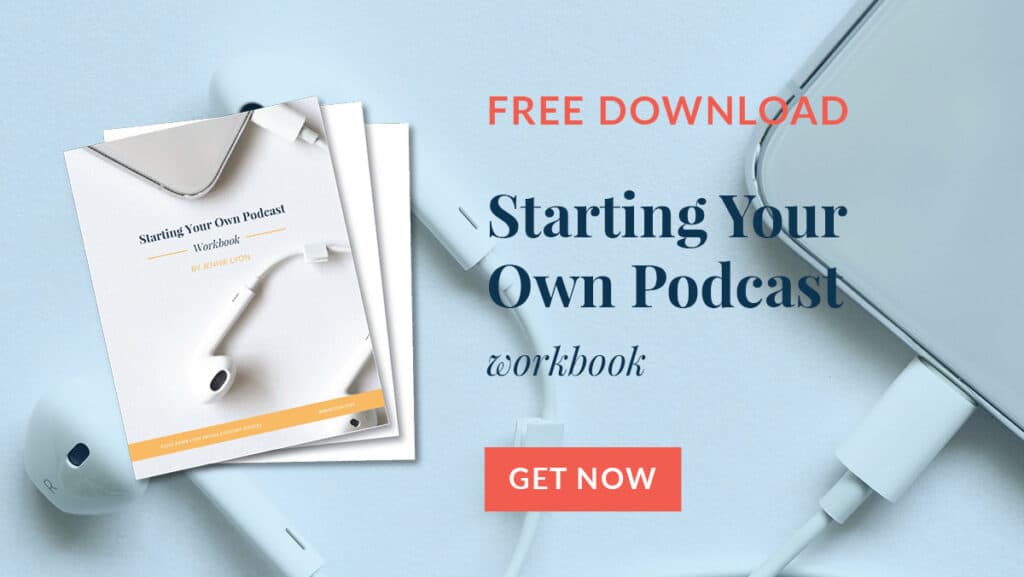
So, What Did We Learn?
Let’s review what we learned about podcasting today:
- Podcasts have replaced radio as the premiere form of spoken word entertainment.
- Podcasts can help position you as an expert online.
- Starting your own podcasts can be a great way to create more content and connect with your audience.
- You need a good-quality microphone and editing software.
- Don’t forget the details, like album art and marketing!
- You can either write a script or wing it.
- Practice makes perfect. If your first podcast sounds a little awkward, it will get better over time.
- Create an editorial calendar to help keep you on a regular recording schedule.
- Guests can be a great way to grow your audience!
- Sponsors can help off-set the cost of the show.
- Be sure to recycle your podcast into other forms of content.
- Create new content to go along with your podcast.
Like I mentioned above, I’m offering a brand-new download to go along with this week’s episode. Getting started with podcasting can be tricky, which is why I’ve created this checklist.
If you’ve listened to the podcast or reading this blog, then you already know how powerful podcasting can be for an entrepreneur. I’ve been loving recording the last few weeks! If you’d like some help getting your podcast off the ground, please contact me today for a free consultation!
Rate, Review, & Subscribe on Apple Podcasts
If you like what you hear on the podcast, please consider rating and reviewing my show! Woo Hoo! Click here, scroll to the bottom, tap to rate with five stars, and select “Write a Review.” I would love to hear what episodes you enjoy the most!
If you haven’t done so already, please subscribe to the podcast. I’ll be adding new content weekly, if you’re not subscribed, there’s a good chance you’ll miss out. Subscribe now!

